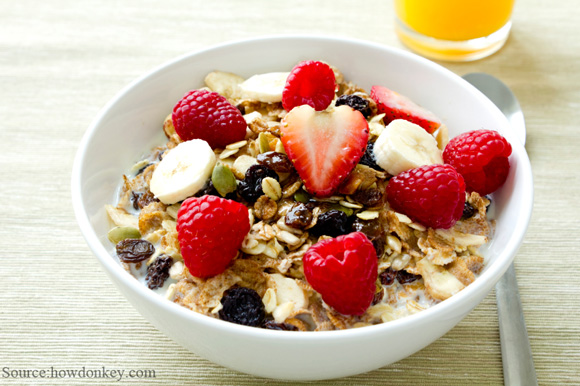Diet Tips to Keep You Fit & Healthy
Being healthy and keeping in shape doesn’t have to be about following strict diets or exercising all day, every day. If you change a few smaller things instead of changing lots of bigger things too you will find it easier to stick to. With a few of the tips added to your life you can keep yourself fit and healthy. Most of us could probably do with eating less than we do now. More specifically eating less of the unhealthy stuff. This doesn’t mean eliminating all the foods you love, but maybe moderating the amount you do eat.
Moderation – The goal of healthy eating is to develop a diet you can maintain for life, not just for a few weeks. When you have finished eating a meal you should feel satisfied not stuffed or over full. Start with looking at how much you are actually eating. You may be eating more than your body actually needs. Most of us could probably do with eating less than we do now. More specifically eating less of the unhealthy stuff. This doesn’t mean eliminating all the foods you love, but maybe moderating the amount you do eat.

• Try Not To Ban – If you ban certain foods, you would naturally want to eat them more. It will be all you can think about and if you gave in you then would feel bad for ‘failing’. Instead reduce the amount you let yourself eat. That way you’re not setting yourself up for a fall.
• Portion Sizes – look at portion sizes. It’s recommended that when eating a portion of meat, fish or chicken that it is the size of a deck of cards. Also if you have rice, pasta or potatoes with it then they are about the size of a traditional light bulb.
How You Eat – Healthy eating isn’t just about what you eat but how you eat too.
• Studies Show That by Eating your dinner earlier and then fasting till your breakfast 14/16 hours later may help to regulate your weight. This is because you eat when you’re more active and gives your digestive system a break when you’re less active. Plus also those snacks you reach for in the evening tend to be high in fat and calories.
• Try to Sit at the Table and Eat With Others: This is especially good for children as it helps you model healthy eating habits as they learn by doing. It also helps you to stop eating in front of the TV or computer which is when people tend to overeat without realising.
• Listen To Your Body – Sometimes when you think you are hungry you are actually thirsty. Instead of reaching for the biscuit tin next time you think you’re hungry between meals, stop and have a drink of water first. When you’re eating a meal, stop before you feel full. It takes time for the brain to tell your body you have had enough. So eat slowly and stop eating before you get that full feeling.

Don’t Skip Breakfast – Some people think that skipping breakfast is the way to lose weight. Research has shown that it’s actually better for your weight to eat breakfast.
• A healthy breakfast can jump start your metabolism. Then eat smaller healthier meals throughout the day to keep your energy up and metabolism going.
• When you skip breakfast you are more likely to look for something eat earlier than those who eat breakfast. You are more likely to reach for the quickest thing to eat which more often than not isn’t that healthy and probably high in calories, fats and sugars.
• When you eat a healthy breakfast you are more likely to be a healthier weight and more productive at work.
Limit Sugar – If you’re trying to be healthy you may be avoiding the obvious sugar culprits like chocolate and cakes etc. But sugar is hidden in so many foods that you may be eating more sugar than you think you are. Large amounts of sugar can be found in bread, canned soups, sauces, margarine, ready meals and fast foods.
• Try to eat naturally sweet food such as fruit to satisfy you sweet tooth. Keep fruit handy to snack on to stop the temptation to reach for the chocolate. As you eat more and more fruit and get use to natural sugars you will find that the sweets and cakes become too sweet for you.
• When shopping, if possible, buy unsweetened goods. If you have to add sweetener you are more likely to add less than the sweetened versions and you know how much sweetener is being added.
• Read the labels to find hidden sugar as sugar id often disguised by using terms such as…Dextrose, Fructose, Glucose, Maltose or Sucrose. Maltodextrin or Dextrin. Can sugar or maple syrup. Crystalside or evaporated cane juice. Brown rice syrup.
• Avoid Sugary Drinks: A can of your favourite drink can have around 10 teaspoons of sugar in it. That is more than the daily recommended amount.
